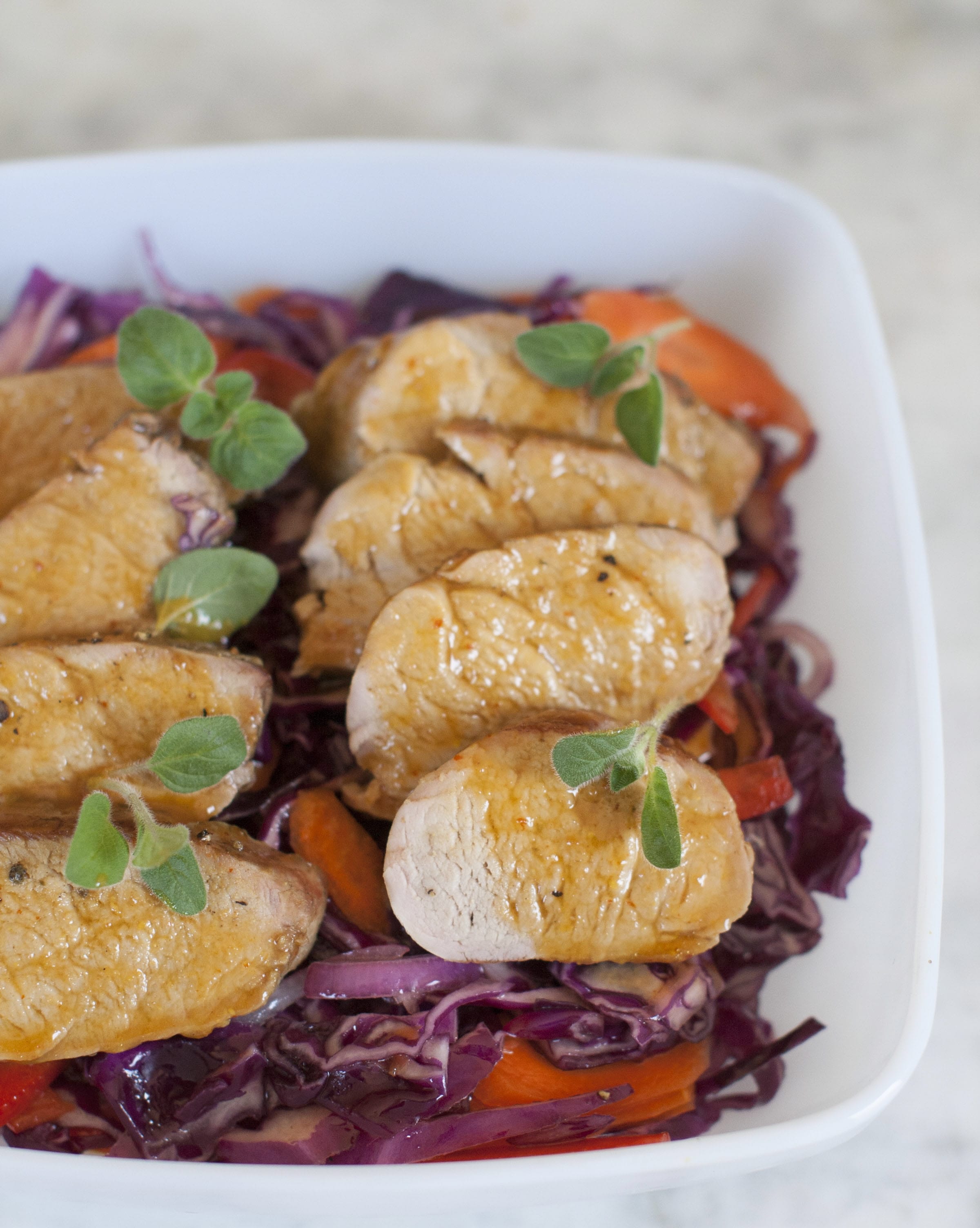Pork with mustard and molasses reminds me of my grandmother. Every summer, she would roast a fresh ham slathered with mustard and molasses. It was an all-day affair and the house would smell heavenly.
In my house, where time is a bit tighter, I have adopted her flavors and created a quick cooking pork dish that is reminiscent of her recipe, but meets my modern day schedule. The mustard-sorghum mop takes this easy grilled weeknight pork tenderloin from ordinary to extraordinary!
A mop is a thin basting sauce that is “mopped” or dabbed on the food as it cooks. Mops are mostly used when smoking authentic barbecue because they keep the food basted and add moisture during the long slow cooking time. Every time you “mop,” you add a layer of flavor to the “crust” of the meat. But I also like to use a mop to add easy flavor to quick-cooking foods, like the pork tenderloin in this recipe, as well as chicken pieces.
In this recipe, I call for sorghum syrup, but feel free to substitute molasses if you can’t find it. Both are dark, thick syrups with intensely sweet, slightly bitter flavor. Sorghum syrup sometimes is even called sorghum molasses. But there is a difference. Sorghum is made from boiling and evaporating the sugars that are pressed out of the sorghum grain. The plant looks a lot like corn stalks, minus the ears of corn.



